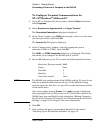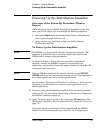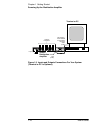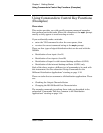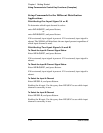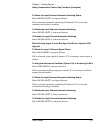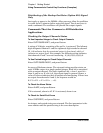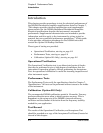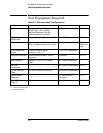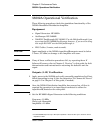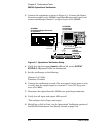
Chapter 1 Getting Started
Using Commands to Control Key Functions (Examples)
User’s Guide 1-15
To Check Instrument Identification
Enter *IDN?, and press Return.
A quoted identification string is returned, similar to the following:
HEWLETT-PACKARD, 58502A,3426A–00123,3422 – A
To Clear the Error Queue
Enter *CLS, and press Return.
The error message disappears and the scpi> prompt returns.
Changing the RS-232 Serial Port Characteristics
Refer to the subsections “Making Changes to the Serial Port Settings
(If Needed)” and “Determining the Serial Port Settings” on page 3-8 in
Chapter 3 for complete details and cautions concerning the use of these
commands. Always remember to make corresponding changes to your
PC serial-port parameters after changing the instrument’s serial-port
characteristics.
At first power-on from the factory, serial-port settings are as follows:
• Full Duplex is ON (can be turned OFF)
• Baud rate is 9600 (can also be set to 1200, 2400, or 19200)
• Data bits is 8 (set by parity = None)
•Pace is NONE (can be changed to XON)
•Parity is NONE (can also be set to ODD or EVEN for 7 data bits)
If you need to change one of these, enter the desired parameters
appended to the following commands for the stated purpose.
To Turn Off Full-Duplex Communication
Enter SYST:COMM:SER:FDUP 0, and press Return.
To Turn On Full-Duplex Communication
Enter SYST:COMM:SER:FDUP 1, and press Return.
To Check If Full-Duplex Communication is On or Off
Enter SYST:COMM:SER:FDUP?, and press Return.
If 1 is returned, duplex is on. If 0 is returned, duplex is off.



